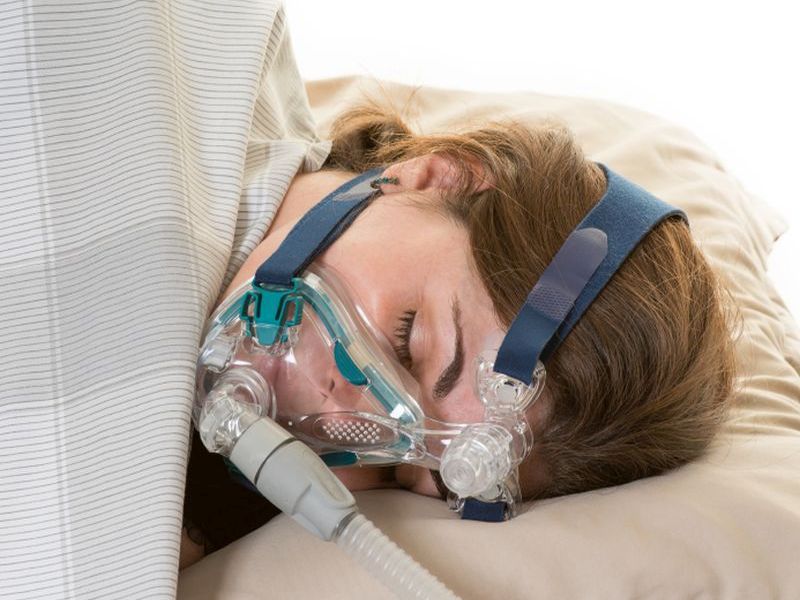
People suffering from severe obstructive sleep apnea are at a greater risk of catching COVID-19, a new study finds.
But researchers at Kaiser Permanente Southern California also found that the longer patients used a continuous positive airway pressure (CPAP) mask while sleeping, the more their COVID-19 risk dropped.
For the study, a team led by pulmonologist Dr. Dennis Hwang collected data on nearly 82,000 U.S. patients who were evaluated for sleep disorders between 2015 and 2020.
Of those, nearly 1,500 would test positive for a COVID-19 infection. In all, 224 were hospitalized, and 61 were in the intensive care unit and/or died.
Untreated sleep apnea was associated with a higher rate of COVID-19 infection, the findings showed.
“Greater PAP adherence, when therapy was used at least four hours a night during the pandemic period, also showed a reduced infection rate,” the researchers reported.
The study also linked obesity, more chronic illness, and being on Medicaid to higher COVID-19 infection rates. Black and Hispanic patients also had higher COVID-19 infection rates.
Though elderly people are generally at higher risk for infection with SARS-CoV-2, the study linked increasing age with a reduced infection rate.
The researchers were also surprised that apnea patients who used their CPAP therapy often had even lower COVID-19 infection rates than patients without apnea at all.
“This further supports a direct physiologic benefit of [CPAP] therapy,” Hwang said in a news release from the American Thoracic Society.
Hwang said both biological and behavioral factors may be involved in the relationship between apnea and COVID-19 risk.
“The higher rate of infection with more severe obstructive sleep apnea and the shared medical risk factors between sleep apnea and COVID-19 such as male gender, obesity and presence of cardiovascular diseases supports a biological influence, perhaps through impact on respiratory function, airway inflammation and sleep fragmentation,” he said.
At the same time, the link between older age and reduced COVID infection rates support a behavioral explanation, Hwang said. Patients with apnea tend to be older, and older patients may be more careful about masking, social distancing and other pandemic-related behaviors, he said.
There may also be a direct biological and indirect behavioral explanation for the findings, Hwang said.
“Reduced upper and lower airway obstruction, improved lung expansion, improved mobilization of secretions and PAP heated humidification may be potential protective mechanisms,” he said. “However, the relationship between infection risk and demographic factors such as increased age, racial/ethnic minority status and lower economic status suggest that there is a socioeconomic influence at work.”
The findings were presented Monday at an online meeting of the American Thoracic Society. Findings presented at medical meetings should be considered preliminary until published in a peer-reviewed journal.
More information
To learn more about obstructive sleep apnea, visit the Sleep Foundation.
SOURCE: American Thoracic Society, news release, May 17, 2021
Source: HealthDay

Leave a Reply